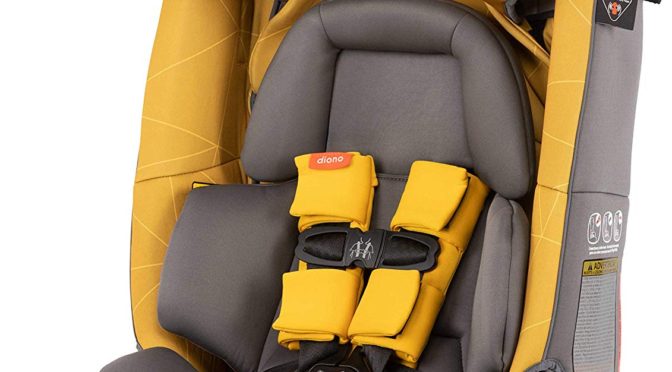I’ve reviewed hundreds of car seats over the last decade of the Car Crash Detective, but in the end, have only ever highlighted a few of them–the ones that keep kids the safest. If you’re in a hurry, I’m happy to say the Diono Radian 3RXT, which you can buy here, is one of them, at least when it comes to rear-facing. If you’ve got more time to read, here’s what makes it a quality seat. Let’s start by reviewing what best practices actually are when car seats are involved.
What’s most important when using a car seat to keep your child safe?
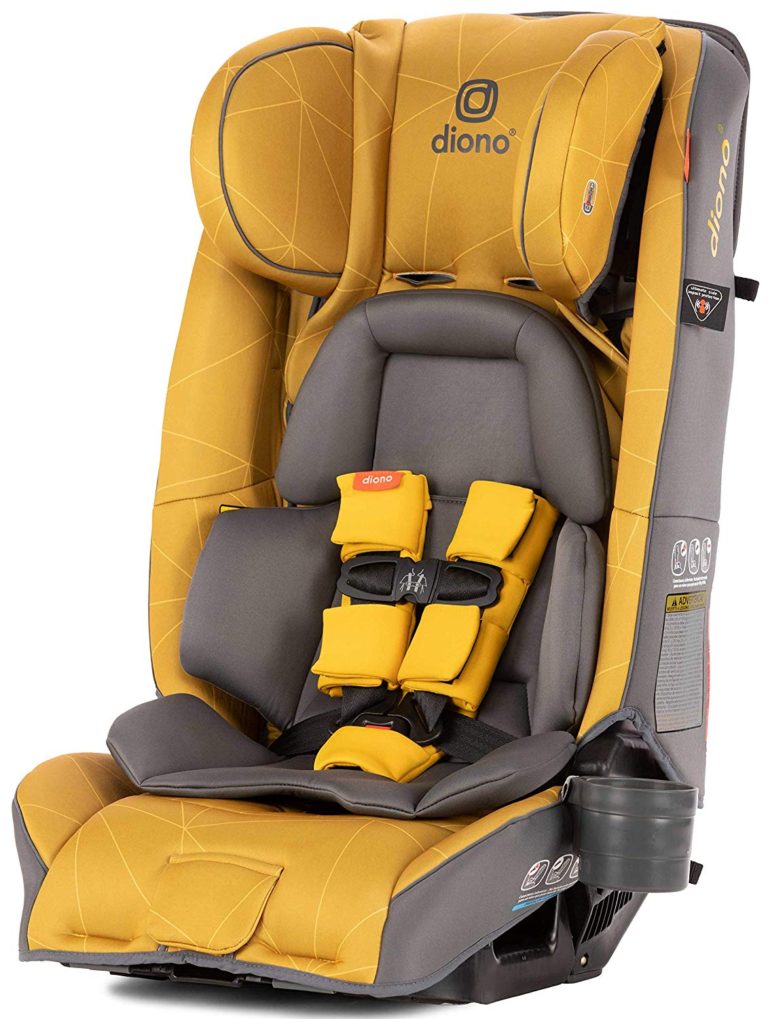
When it comes to keeping kids safe through car seats, the name of the game is best practices. As with many things in life, knowing what they are is half the battle. The other half is following them. To summarize the Swedish approach, there are three things you want to do: rear-face until your child is at least 4 or 5, and then keep her in a booster until she’s 10 to 12, which is typically when she’ll pass the 5-step test. After that, keep her in the back seat until she’s at least 13. Everything else is just noise. You don’t fuss about forward-facing at 1 or 2 or anything ridiculous like that. You don’t negotiate about whether your child can start using seat belts so she doesn’t look different from the other kids at the drop-off line in elementary school. You don’t put her in the front seat just because she tells you all her friends have been there since they were 5, 6, 7, 8, 9…none of that matters. You rear-face until 5. You booster until 12. You keep her in the back until she’s a teenager. And you rest easy knowing you’ve done all you can from the car seat end of things, and you can focus on the broader picture of driving safely, choosing safe roads, and using a safe vehicle.
With all that said, where does a car seat like the Diono Radian 3RXT fit in? Is it a worthy member of the Diono (formerly Sunshine Kids) family and a worthy successor to the Radian RXT? And most importantly, does it fit into best practices? The short answers are yes, yes and yes for rear-facing but no for boostering. Functionally, it’s essentially the same seat as the Radian RXT with a new name and different colors. For the long answers, let’s dig into the details a bit. We’ll take the perspective of a parent interested in best practices as modeled in Sweden.
How long can you rear-face with the Diono Radian 3RXT (weight, height, growth charts)?
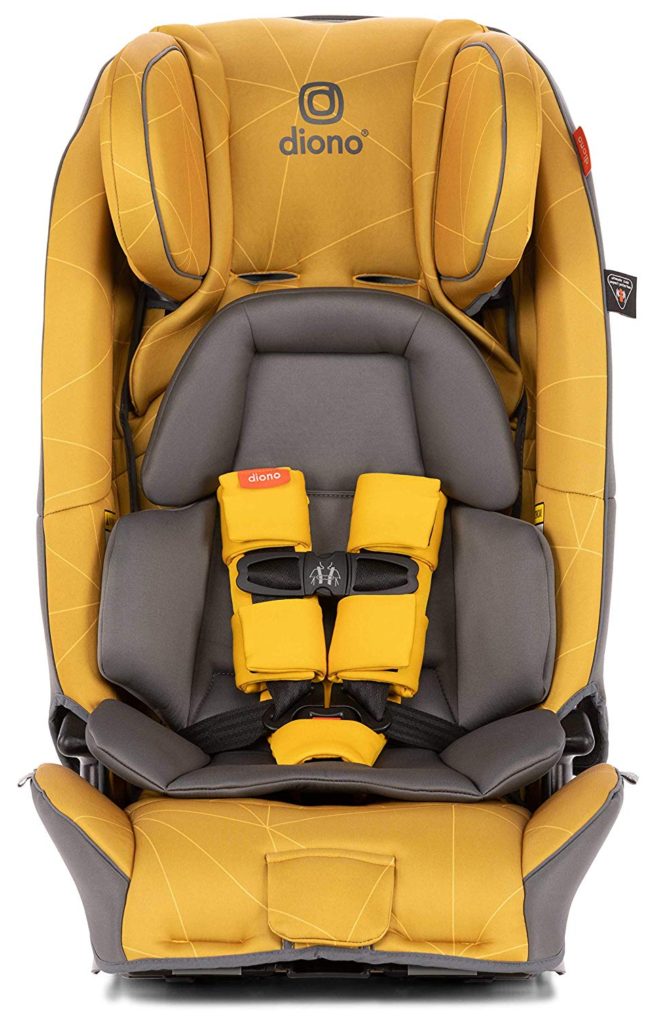
You can rear-face from 5 to 45 pounds (20 kilograms) with the Radian 3RXT. Your child’s overall height must be 44 inches or fewer and the top of her head must stay at least 1.5 inches beneath the top of the Radian’s head rest. These are the theoretical limits, but what are the real-world bottlenecks?
Let’s look at weight as a reference first. In practical use, the 45 pound weight limit means that a 90th percentile girl by weight will be able to use the 3RXT until she’s 4:6 (4 years, 6 months). A 50th percentile girl by weight will make it to approximately 6:3. A 10th percentile girl by weight will be able to rear-face until she’s approximately 7:9! A 90th percentile boy by weight will be able to use the 3RXT until he’ s 4:6, while a 50th percentile boy by weight will fit within the weight range until he’s around 5:9. A 10th percentile boy will make it to 7:6 looking solely at weight.
When using height as the reference, you get less time. Our 90th percentile girl outgrows the 3RXT when she’s 4:9. Our 50th percentile girl outgrows it at 5:6, while our 10th percentile girl by height won’t outgrow it until she’s 6:6 . Our 90th percentile boy outgrows the 3RXT when he reaches 4:9, just like our 90th percentile girl. Our 50th percentile boy makes it a bit past 5:6 before outgrowing the 3RXT by height, and our 10th percentile boy makes it all the way to 6:6.
How long will a 50th percentile height and weight girl or boy last rear-facing in the Diono Radian 3RXT?
Since car seats are outgrown by whichever limit is reached first, we see that when rear-facing with the 3RXT, height is the bottleneck for most children. This, by the way, is almost always the case with car seats. Weight appears to be the bottleneck for exceptionally heavy children, but for typically-sized and smaller children, the 3RXT will be outgrown by height long before it will be outgrown by weight. Practically speaking, the expected rear-facing lifespans of a perfectly average girl and boy (one at the 50th percentiles for both weight and height) are 5 years and 6 months.
How long can you use the Diono Radian 3RXT as a booster (weight, height, growth charts)?
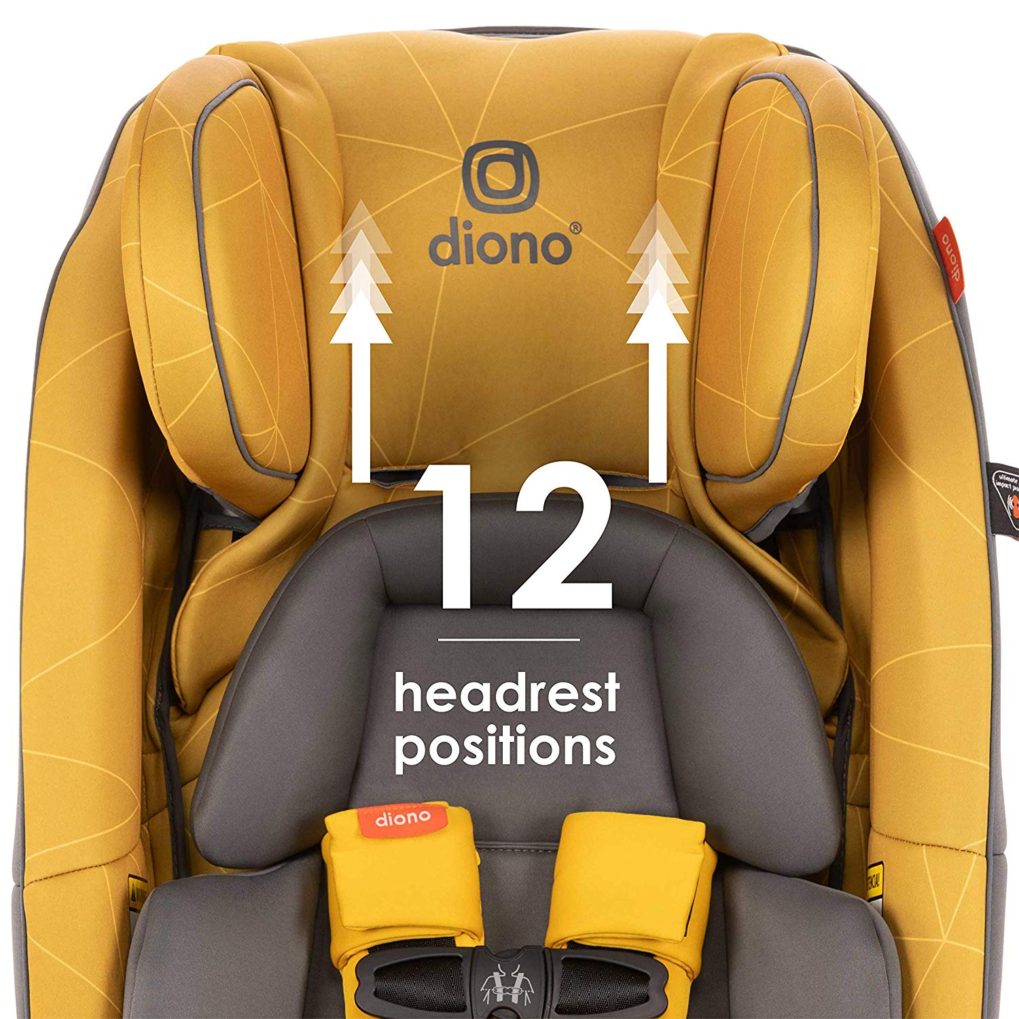
I’m not going to look at forward-facing lifespans for the 3RXT because a.) we’ve already established that most children will be able to use it to rear-face until 5, which is unquestionably the safer position when compared to forward-facing, and b.) parents in Sweden are recommended to move directly from rear-facing at 5 to boostering. For completion’s sake, however, you can forward-face until your child reaches 65 pounds or 57 inches, and the harness height tops out at 17 inches. With that out of the way, let’s look at how long, practically-speaking, you can use the 3RXT as a high-back booster.
You can use the Radian 3RXT as a booster from 50 to 120 pounds. Your child’s shoulders must at least reach the 4th harness strap slot on the low end, and the belt guide at the shoulder tops out at 17 inches. Practically speaking, the seat is outgrown as a harnessed and booster seat once your child’s shoulders touch the lower portion of the headrest (known in parlance among Diono parents as the “wings” or “ears” of the seat).
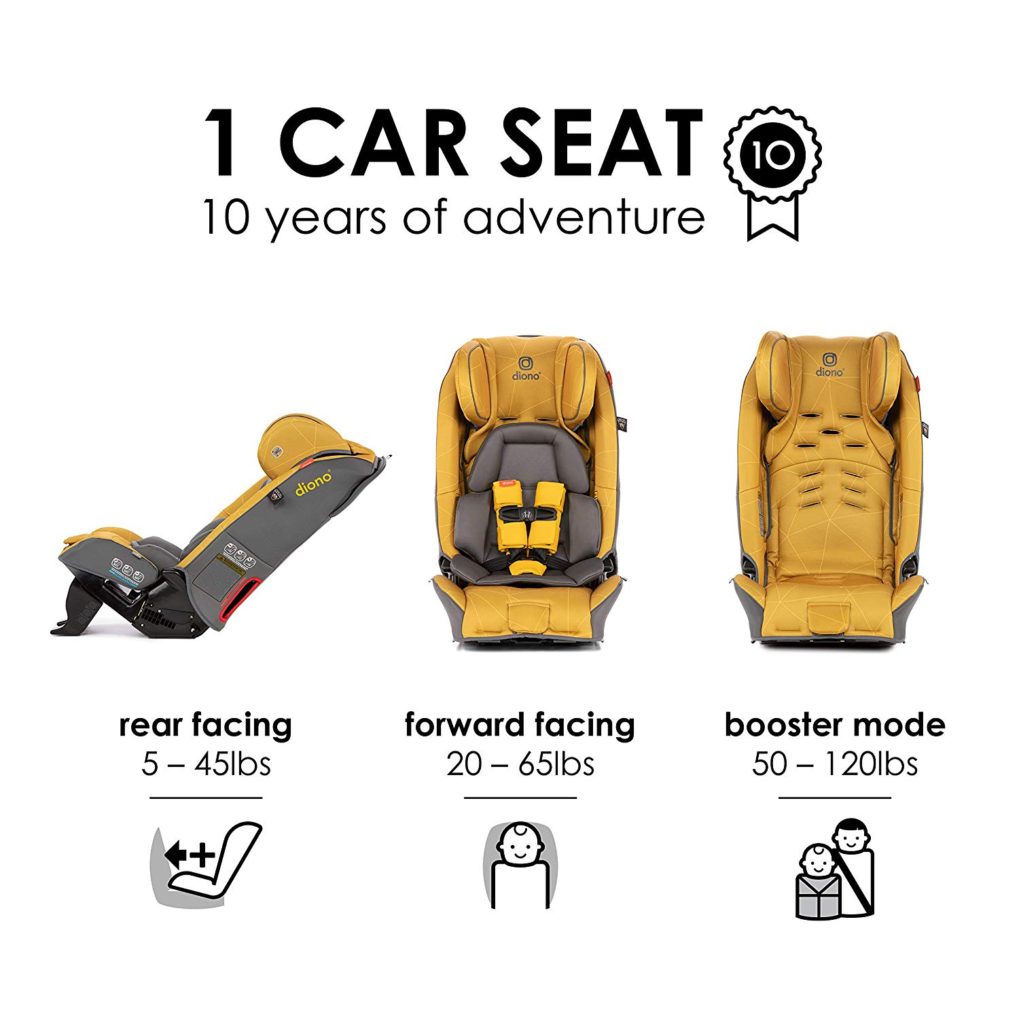
When looking at weight as a reference, a 90th percentile girl would make it to 11:9, a 50th percentile girl would make it to 16:9, and a 10th percentile girl would make well into adulthood. Similarly, a 90th percentile boy would make it to 12:3, a 50th percentile boy would make it to 14:6, and a 10th percentile boy would make it to 19.
Diono does not provide a height limit for the Radian 3RXT, but since the belt guide tops out at the same height as the top harness height, 17 inches, and the forward-facing limit is 57 inches, this suggests 57 inches is the effective height limit, ignoring the additional restrictions imposed by the wings. With that in mind, ignoring the wings, a 90th percentile girl by height would theoretically make it to 9:9, a 50th percentile girl would make it to 11:3, and a 10th percentile girl would make it to 12:6. Similarly, a 90th percentile boy by height would make it to 9:5, a 50th percentile boy would make it to 11:3, and a 10th percentile boy would make it to 12:9.
How long will a 50th percentile height and weight girl or boy be able to use the Diono Radian 3RXT as a booster seat?
Once again, height is the bottleneck. However, with the additional restrictions that come with the wings, most kids simply aren’t going to make it to 57 inches before outgrowing the Radian 3RXT in booster mode, simply because their shoulders will reach the wings before they reach 57 inches. This is the single biggest disadvantage of the 3RXT compared to the 3RX or 3R sister models (which replaced the R120 and R100 respectively). A more realistic limit is probably closer to 53 inches for most children. And if we use 53 inches and 120 pounds as the real world limits for height and weight, then a perfectly average girl and boy (50th percentile height and weight) will outgrow the Radian 3RXT in booster mode by 9 years and 3 months.
How easy is the Diono Radian 3RXT to use on a day-to-day level (lifespan, 3-across friendliness, installation, LATCH, seat belts, dimensions, etc)?
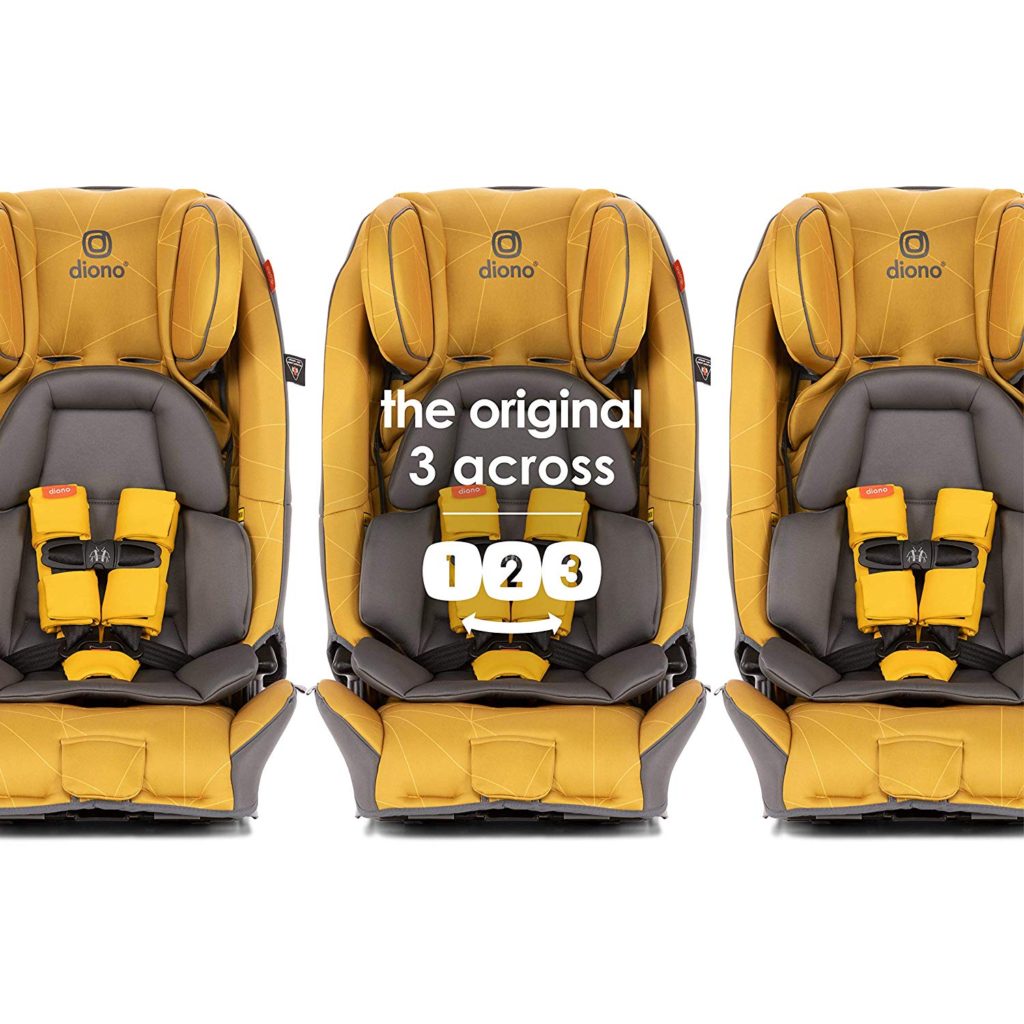
As noted above, the Radian 3RXT is just an updated version of the Radian RXT I reviewed years ago. What this means is that virtually everything that applied to the Radian 3RXT applies to the RXT, including its day-to-day characteristics. The seat has a 10 year lifespan from the date of manufacture and is still one of the absolute 3-across friendliest car seats on the market; you can use 3 Radian 3RXTs to fit 3 across in virtually any car sold in the United States that includes 3 seats and 3 sets of seat belts; the only vehicles I’ve consistently found haven’t worked have been those that require overlapping seat belts with the center seat, and those vehicles, frankly speaking, aren’t designed to carry 3 passengers in the back row at once, making them essentially 4-occupant cars and SUVs. Fortunately, the 3RXT works with everything else.
The seat weighs 24 pounds and is 16.5 inches across at the widest point, which is at the child’s shoulders. There is a lower LATCH weight limit of 35 pounds when rear-facing and 40 pounds when forward-facing; I’d recommend just starting with seat belts, as they’re just as safe and don’t require reinstallations based on vehicle weight limits; you simply need to mind your child’s weight so you know when you need to start forward-facing or boostering. It’s also approved for air travel and folds up nicely to wear as a backpack. It has a steel internal frame, although practically speaking, it doesn’t matter what’s inside a seat as long as it tests well enough to allow you to practice extended rear-facing. It’s also available in 12 different colors, and the fabric is machine-washable. You can see all the prints here.
The seat is easy enough to install; something to keep in mind, though, is that not every infant will have a safe fit at the newborn phase due to the rather steep recline in the seat. If you have a preemie or a small infant, you’ll want to consider starting off with a dedicated infant seat. The ultimate judge will be whether your baby slumps forward when installed. If her head tilts forward in a way that could cut off her airway, she isn’t old enough for the seat and you’ll want to try again in a few days or weeks but use a different seat (e.g., the Chicco KeyFit or any other infant seat) in the mean time.
How does the Diono Radian 3RXT compare to the best Swedish car seats (e.g., the 55-pounders)?
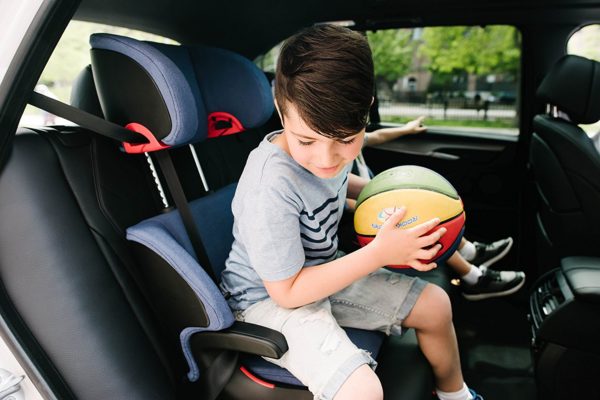
Compared to the best Swedish seats for rear-facing, the main differences to keep in mind involve the weight limits. There are a few other things, such as load legs and so on, but practically speaking, the lion’s share of the difference between this seat and one you might pick up in Sweden or elsewhere in the European Union is the rear-facing weight limit. At 45 pounds vs 55 pounds, you simply won’t get as much time rear-facing before you’ll need to start boostering. However, as noted above, the Swedish government advocates rear-facing until at least 4-5, and you’ll be able to use the Radian 3RXT to rear-face the average child (50th percentile weight and height) until she’s 5 and a half years old. A 90th percentile child by height or weight will get at least 4 years and 6 months out of the seat, which isn’t sloppy either, considering the fact that most parents in the United States begin to forward-face once their children turn one. The bottom line is that if you want to practice Swedish-style best practices in rear-facing, you’ll do just fine with the 3RXT.
The bugaboo comes when you want to booster. The Swedes encourage boostering until the 5-step test is passed, which typically isn’t until kids are 10 to 12. Practically speaking, because the Radian 3RXT tops out at 9 years and 3 months for 50th percentile children, you’re not going to get to the point where kids are passing the 5-step test. In fact, there’s a chance your child won’t make it past 8 depending on his or her proportions. As a result, despite the fact that it has a 10 year lifespan, the Radian 3RXT simply won’t last long enough to be the only car seat you ever need for your child. You’re going to need to buy a booster seat. I recommend the Clek Oobr, but there are a range of options. The key point is to make sure whatever you choose gives your child enough height to reach the age where she passes the 5-step test. The weight is almost never the problem in booster seats; the bottleneck involves the available height offered to the child. I’d personally suggest just buying a booster once your child fully outgrows the Radian 3RXT in rear-facing configuration (which, again, will be past 5 for most children); that said, you can also just forward-face until you’re ready to buy a separate booster, or use the built-in booster mode of the Radian.
What makes the Diono Radian 3RXT worth buying over any other car seat?
Buy the Radian 3RXT because it allows you to follow Swedish-style best practices for rear-facing. Buy it because you can use it to rear-face until 5. Don’t buy it if you plan on forward-facing at 1, 2, or 3; that’s a waste of money and negates the primary point of a seat like this. Buy it because you want to fit 3 across in any vehicle without thinking twice about it. Don’t buy it because you want one car seat that will last from the day you leave the hospital (or birthing center, or home birth) until the day your child is ready for a seat belt, because it’s not going to last that long. If you’re ready to buy it, buying the Radian 3RXT (or anything else) through my link here helps me write more reviews and articles on best practices. Finally, you can buy the Clek Oobr here. Drive safely!
 If you find my information on best practices in car and car seat safety helpful, you can buy my books here or do your shopping through this Amazon link. Canadians can shop here for Canadian purchases. It costs nothing extra to do so, but when you shop through my links, a small portion of your purchase, regardless of what you buy, will go toward the maintenance of The Car Crash Detective.
If you find my information on best practices in car and car seat safety helpful, you can buy my books here or do your shopping through this Amazon link. Canadians can shop here for Canadian purchases. It costs nothing extra to do so, but when you shop through my links, a small portion of your purchase, regardless of what you buy, will go toward the maintenance of The Car Crash Detective.

